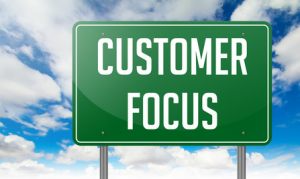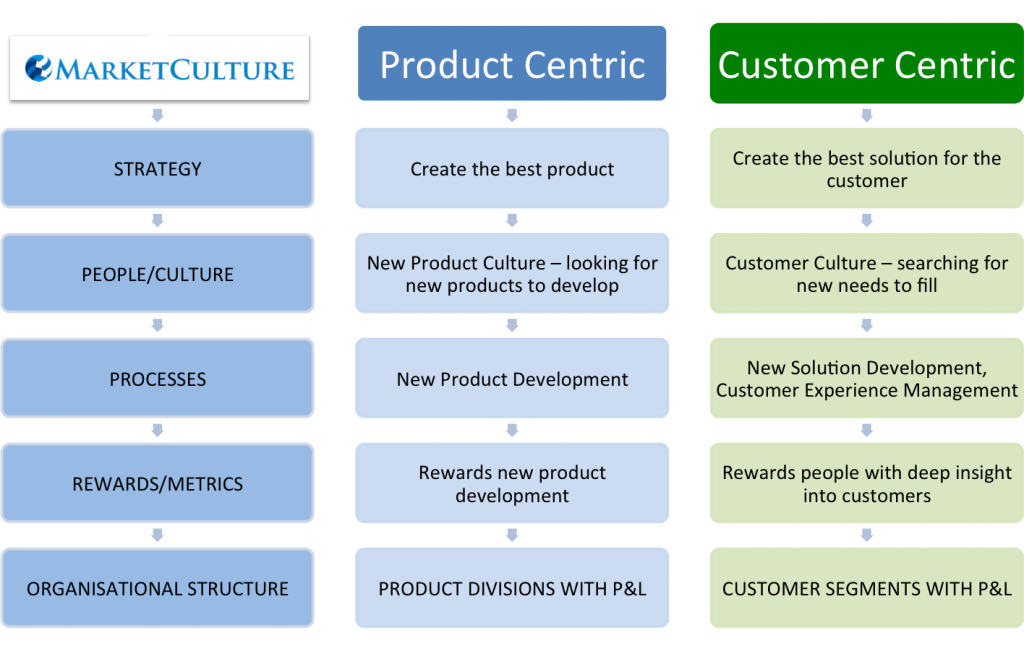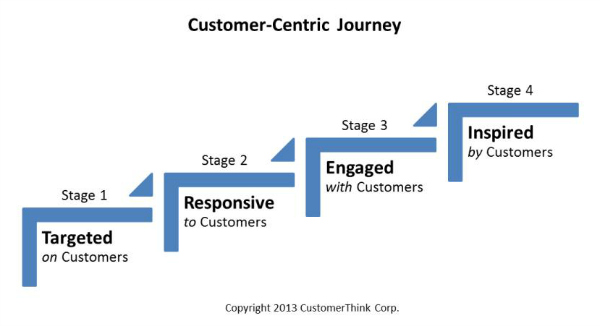
It looks like nowadays many businesses find themselves forced into relentless product development race caused by market dynamics, technology and competition. The only path to survive is to innovate with increasing speed, efficiency, and quality. And the goal of winning the race is put at the heart of decisions, ideas and marketing strategy, making new product development one of the most critical business activities.
But is it only the product that matters? We bet you know the answer! If a company is obsessively focused on the products it brings to market rather than the customers that buy those products, it’s only a matter of time and technology before the competitors will bring something newer, shinier, and more affordable to the market. The companies that stand out are those that have customer relationship at their heart, or at least don’t neglect it too much, if you will.
Customer Focus versus Product Focus: What Kind Of Business Are You In?
If you would ask people whether they believe their businesses are customer-focused or not, you would barely find anyone saying that they really don’t care what their customers think. But despite all the rhetoric about customer being a king, striving for making customers happy and delighting them, that’s quite rare in practice and easier said than done.
So how do you go about defining your focus and implementing the right strategy within your company? Recently I came across an interesting blog post by Chris Brown, the CEO of MarketCulture Strategies. It lets you find out where you stand and visually compare main differences between product-centric and customer-centric approaches through a clear chart highlighting major areas for taking important strategic decisions.
Chris makes a great point that the future for companies is to balance the product focus with a customer focus so that customers feed directly into decision making and are not an afterthought. We can’t help but agree that the customer centric approach should be deeply integrated into a company strategy, processes, and culture. And that living up to expectations of a customer experience matters as much as enhancing the product competitiveness.
Building Customer Centric Culture: What Does It Take?
If your business isn’t focusing on customer centricity, it’s time to start doing some research into how to get things going. Creating a customer centric company takes more than putting your efforts and making an investment in the customer service operations and systems. I was excited to come across an article by Micah Solomon where he shares 7 secrets of building a customer-centric company culture. It definitely can serve as a stepping stone for brands of all sizes for building customer-centric strategy.
What are the seven secrets that Micah believes help customer-centric companies succeed? Here they are, with some food for thought to see if your company culture is as customer-centric as the legendary brands showcased in the Forbes article:
1. Articulate your central philosophy in just a few words, a few meaningful words.
2. Elaborate on your central philosophy with a brief list of core values
3. Reinforce your commitment to these values continually.
4. Make it visual.
5. Make your philosophy the focus of orientation.
6. Train, support, hire, and, if necessary, use discipline to enforce what’s important to you.
7. Include the wider world.
Stages of Customer-Centric Journey
Bob Thompson, CEO of the research and publishing firm CustomerThink, in his outstanding guide for organizations truly committed to being customer-centric and creating great customer experiences, notes that customer-centricity is a journey, not a destination. To progress, companies generally evolve through four stages of development under the leadership of the CEO:
Stage 1. Targeted on Customers: to sell more products and services to the “best” customers
Stage 2. Responsive to Customers: to make improvements by acting on customer feedback
Stage 3. Engaged with Customers: creating an emotional bond that drives advocacy behavior
Stage 4. Inspired by Customers: developing new solutions to solve problems before customers ask!
In his book Hooked on Customers: The Five Habits of Legendary Customer-Centric Companies Bob Thompson describes each stage of customer-centric maturity journey in detail using examples and data to help readers better understand what “best in class” organizations do and the results that can be produced. He also comes up with a simple powerful mantra for each level.
The author admits that the vast majority (roughly 70 percent) of companies are at the first two stages of their customer-centric journey. Most of companies start at Stage 1 and progress to Stage 4 over time, but that’s not the only pattern. Also, while it’s true that most stage-four companies are highly profitable, it doesn’t mean you can’t make money at other stages.
Your Turn
So where are you in your journey? Do you believe you are customer-focused? What are your ideas and steps towards more customer-centric culture within your company? We would love to learn about your experience, so please leave a comment if you have something to share. Wherever you are on your customer-centric journey, keep moving. And good luck!
Provide Support is a leading software provider in customer service, offering live chat and real-time visitor monitoring tool for websites. Empowering customer service with live chat. www.providesupport.com
- 4 Dimensions of Customer Trust: How To Get The Most of It - March 14, 2018
- The Importance of Critical Thinking in Customer Service - February 15, 2018
- Will AI Take Humans out of Customer Service in The Near Future? - January 10, 2018



Hello again Julia. Hope you had a great holiday!! I’ve learned a lot reading your articles over the past few months. At Hale Associations, we’re focusing more on our customers and their needs. It has been an incredible success. You’re absolutely right. I see a lot of companies that focus on a new product more so then the customer. You see this a lot actually. Not that they don’t care about the customer, just that the focus is less about the customer. I think we fall along step 3 also, but we’re young. Our clients know they can count on us and rely on us. We have an average response time of 2-3 minutes during operating hours. Your experience and knowledge is a reason for that. Always appreciative to read your work Julia. Hope you have a great 2015.
Hello Richard. The holidays are really magic for our team this year, and we hope yours’ are wonderful too. We are glad that we can share our thoughts and knowledge with our readers, we love that you read our blog, and we are grateful for your comments. As to the focus of the article, sure, we believe that the customer-centric culture is a must for successful growth of any company, and though sometimes it goes through by unique patterns, it comes to the idea of taking care about the customer first, in the long run. We are glad to hear this blog article was useful for you, and look forward to hearing more about your company progress and success in 2015. Who knows – probably we both will reach the stage 4 in the journey by 2016:)
Hello julia, this is very interesting article i would like to thank you on this, as i a m from engineering background and i studies the marketing ,i am totally convinced that to continue and growing in any marketing you have your strategy concentrating on the customer other than that you will have ups and downs
The customer centric idea you handled perfectly
Thank you for reading, Rami
Hi Julia, this is a good article but I’m particularly interested in how organisations use technology to support them on what you rightly point out is a journey. What are your thoughts about how technology can be used to help customer service teams better engage with their customers and how they tread the line between automated self service and personalised service across diverse channels.
Happy new year to you
Steve
Thank you for the comment, Steve. You’re definitely not alone when it comes to having questions about how technology can help us better engage with our customers.
When it comes to tools, I suppose it’s your customers who have the right to choose channels most suitable for them. And you would need to keep your eye on the ball to be available for help or just a small talk through any channel they choose. Basically, your customers’ communication preferences might depend on your business and your customers themselves, say, older people still prefer phone support while younger generation is more likely to tweet or use Facebook…
Anyway, no matter what methods your customers prefer, you have to pull it over together. In some of my blog posts I made a few attempts to describe useful tools for this purpose, so if you are interested, please check these two Social Media Tools for Customer Service and Putting Live Chat to Work for Omnichannel Customer Service
Julia:
Such an important topic…thank you for highlighting it.
I did find it quite extraordinary that the “7 Secrets of Building a Customer-Centric Company” completely leaves out engagement with customers. I see this so often within companies…they are reticent to actually engage with customers to understand their needs and motivations. Easy to right words and talk among themselves…hard to really take the time and engage! And that makes all the difference.
I noted that your second reference, “Customer Centric Journey” does make customer engagement a foundational element. That tells me the author is much more in-tune with customers.
ooops, pardon my grammar…should be “write words” in the second paragraph.
Thanks for reading, David! I think customer engagement is definitely the key. We might think that we are on the right way just because we think that we know our customers or we listen to them or we are highly responsive to what our customers say… but if we fail to engage them, chances are we do not have the whole picture, aren’t they? I am also sure that people are much more likely to engage with a brand that is eager to get customer feedback and respond timely. So the key is to be open for customer interactions and take the most of all the online communication channels available today